Christmas drinks
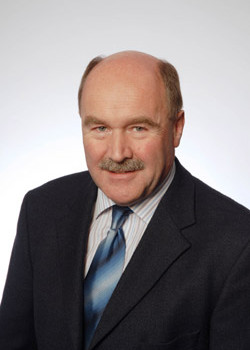
It’s been a tough year for the drinks trade but there’s hope for a merry Christmas yet. Brands are continuing to invest in innovation and marketing which should deliver dividends by the second half of 2011
16 November 2009
Retailers in the off-trade sector, particularly those located in border towns, will be well aware of the impact cross-border shopping has exerted on sales. The Alcohol Beverage Federation of Ireland (ABFI) recently revealed that off-licence sales here plummeted by 7% in the first nine months of 2009 (Nielsen Ireland), while stores in Northern Ireland are reporting a 30% increase in sales to the end of August. By the end of the year moreover, the ABFI expects 10% of all customers from the Republic to travel across the border for off-trade purchases.
Keiran Tobin, chair, Drinks Industry Group Ireland (DIGI) told ShelfLife: “It’s no secret to say that the drinks sector is performing very poorly at the moment. Overall, volume alcohol sales are down across all market segments at -8.5%. The situation is going to get worse before the end of the year; likely heading for -10% this year.”
Looking at categories across the total drinks market, he notes spirits has fallen -20%, wine is down -9%, and beers is down approximately -6%.
Sales heading north
He attributes the misfortunes of the spirits category, to the fact it is “most portable” and carries the most value per single bottle. The damage inflicted on spirits is illustrated by the fact that, “as of the end of September, the Exchequer’s excise take on spirits was down 22%.”
DIGI is hopeful therefore that the Government will take its budget submission to reduce excise duty by 20% on board. According to Tobin, the reduction “as part of an overall stimulation package for this important sector,” represents a “realistic” assessment of the measures needed. He also draws encouragement from the fact Brian Lenihan has indicated he won’t be increasing consumption taxes, with the exception of a carbon tax.
“He’s actually stated that pretty categorically and we welcome that and the fact that he is very explicit about his intention not to increase taxes,” said Tobin. He added that this decision would protect jobs in an industry that employs almost 90,000 people; following job losses of between 10,000 to 15,000 in the last year.
Excellent exports
The real strength of the drinks industry according to Tobin though, lies in its exports performance.
“This is an industry which exports and contributes €1.2 billion to national income in exports, primarily in spirits.” In his role as director of Irish Distillers, he notes Jameson is “the world’s fastest growing international brand of whiskey,” while Bailey’s has “performed extraordinarily well,” and Guinness “has produced good results” in exports.
“If we’re going to get out of this recession, verging on a depression, that we’re in, everyone agrees that it’s going to be export-led.” Tobin therefore believes strong Irish brands will prove crucial in generating re-growth.
Crucially, innovation is also occurring in NPD across the sector, with launches in the ciders, spirits and beers sector. In particular, Tobin notes: “Cider has had a very good run recently, and I’m sure C&C will continue to work hard at it.”
Brands such as Pernod Ricard are also “looking at increasing their A&P spend in the current climate, on the basis that it’s a strong brand and it’ll be ready to take advantage of the upturn globally when it comes.
“I think the same argument holds true for Ireland, and that’s what companies need to do. Obviously there’s a short-term survival issue, but companies need to invest in the in-brands to guarantee longer term success.”
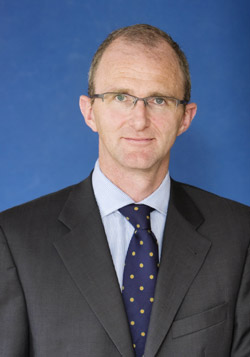
John Galvin, president, Beverage Council of Ireland

John Galvin, president, Beverage Council of Ireland
Soft focus
Meanwhile, the overall soft drinks sector declined by 3.2% in volume terms in 2008. However, as John Galvin, president, Beverage Council of Ireland (BCI) points out: “The soft drinks sector is a long-standing market, which has traditionally been robust and resilient. It declined from 2003 to 2005 and recovered that [growth] in 2006 and 2007, but lost it again in 2008. Subsequently, the sector is currently back at 2005 level.
“But I do make the point that we’ve recovered before and we will recover again because soft drinks is a major category in terms of its sales value, worth in excess of €1 billion.”
A positive sign within the sector is that still and juice drinks, energy drinks and not from concentrate (NFC) juices recorded volume growth in 2008. In fact, the sports and energy drinks category outperformed the market, achieving a 2% volume uplift. According to the BCI’s 2009 review, this translates into consumption per person of 12.4 litres and a value of nearly E308 million. It is perhaps not surprising though that energy drinks are popular during an economic downturn, when stressed workers working long hours, increasingly look for an effective pick-me-up.
Premium can prevail
Furthermore, with volume growth of 1.6%, the still and juice drinks sector was also a winner in 2008. Value sales matched the category’s volume gains, up nearly 2% to reach €106 million. The NFC juice sector likewise managed to buck the overall downward trend, with chilled NFC juice seeing 2% volume increases. Subsequently, this supports the view that even in the current uncertain economic times, premium can prevail.
Unfortunately, the bottled water category did not match this success however. Accounting for over 21% of the soft drinks market, volume growth dropped by 5.2% in 2008, while retail value stood at €190 million. However according to Keith O’Haire, group marketing manager for the Gleeson Group there are still reasons to remain optimistic about its outlook. “Ireland’s per capita consumption across all categories still has plenty of room to grow at just over 200 litres per person; still significantly behind the Western European average of 250 plus litres per person per year.”
Weathering water
“Indeed, specifically within the water category we have a long way to go to catch up with our European neighbours. There are certainly reasons to believe in the long-term potential for growth in this market. In terms of 2010, a retailer-supplier partnership is critical to ensure category development. Value is [also] undoubtedly a key consumer driver.”
Carbonates retained their position as the largest soft drinks sector in the Irish market at just over 50% of all soft drinks consumed, despite witnessing a 3.6% volume decline in 2008. This took total category volume to 430 million litres, while retail value stood at €585 million.
Fruit juice volumes also fell by 3% to 64 million litres. However some segments within juices did manage to hold firm and heavy price promotion saw retail values reach €138 million.
Innovation essential
Despite, these falls in volume however, John Galvin believes continuing product innovation will provide the key to re-growth in an industry that pays €200 million a year in VAT.
He adds, all parties should work together to ensure profitability. Retailers can play their part he believes, through providing strong space allocation, merchandising, stocking the right ranges, and having “reasonable expectations on pricing and margins.” In saying this, he points out that soft drinks provide one of the most generous margins within FMCG in the mid-20% range.
Kevin Donnelly, marketing director, Britvic Ireland is of a similarly optimistic mind-frame. “The soft drinks category is favourably positioned to recover quickly from the recession. Soft drinks are affordable everyday treats and satisfy consumers’ everyday hydration and refreshment needs in a fun and easily accessible way.
The soft drinks category responds strongly to promotions and display. The more soft drinks are displayed, the more the shopper purchases, and the more the consumer consumes. Nearly two-thirds of soft drinks bought on promotion generate increased consumption, unlike many other categories where promotions lead to mere stocking up by the consumer. Britvic Ireland is therefore offering consumers best-ever-value across its portfolio of market-leading brands.”
And Frank O’Donnell, head of sales, Coca-Cola Bottlers Ireland provides a realistic market forecast. He comments that by maintaining innovation, choice, value and working closely with retail partners, that the category will “stabilise over the coming 18 months and return to growth in the medium term.”
Spotlight on Barry & Fitzwilliam
While overall beer volumes have declined, Cork-based drinks distribution firm occupied an enviable position this summer. Volume sales of Corona surged a staggering 50% in August compared with the same month last year.
“This is a fantastic result in the current environment,” company director Michael Barry commented. Accounts filed for 2008 also show the Corkonian distributors saw pre-tax profit rise 6% to €3.4 million last year. Retained profit for 2008 was also up to €3 million from €2.8 million in 2007, while turnover was down slightly from €86.1 million to almost €83 million.
According to Michael Barry though, 2009 is proving a tougher year. The company nevertheless made a bold move to consolidate its position in the Irish market in August of this year. The country’s leading independent drinks distributor has now taken over Dublin-based Allied Drinks Distributors’ former portfolio. This represented an important strategic move for Barry & Fitzwilliam, with new brands including Hardys, Robert Mondavi, Echo Falls, Nobilo, Stowells, Errazuriz, Villa Maria, Blackthorn Cider and Tauntons Cider.
Barry commented of the move that it confirms the firm’s “position as a market leader in the Irish drinks distribution industry.
“We are providing competitive advantage in that our customer relationships, diverse product offering, distribution and marketing capabilities and capacity utilisation meet the needs of the current challenging marketplace.”
The market leader, which is “determined to deliver economies of scale for Constellation Europe,” subsequently now offers an extensive portfolio, as well as customer care. Its range features over 120 international premium brands of wines, spirits and beer, including multi national drinks groups Beam Global, Rémy Cointreau, Edrington, Australian Vintage and Corona Extra.
A focus on quality is quickly evident on examination of the brand’s offering across each category moreover. Barry & Fitzwilliam claims its USP within the beers category is that its brands “offer a higher quality premium alternative to bland commonplace discounted beers.” Over 50 wines from some of the best winegrowing regions in the world and over 40 spirits and liquors also adorn Barry & Fitzwilliam’s impressive portfolio.
Looking towards the future, it has been reported that the company is planning an expansion into the north, and could be operating there by the year’s end. So while 2009’s climate may be proving tougher according to its company director, Barry & Fitzwilliam would appear to have the brand offering to weather the storm.



 Print
Print

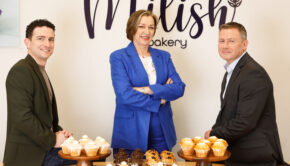
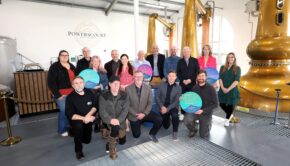
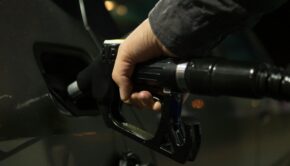


Fans 0
Followers